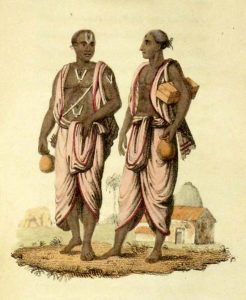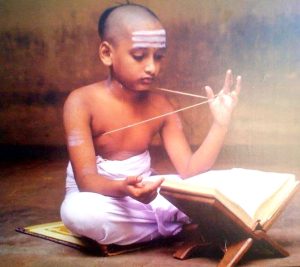Brahmans outside India and Southeast Asia
Brahmins, one of the oldest and most influential social groups in India, have a rich history that extends far beyond the Indian subcontinent and Southeast Asia. While Brahmins are primarily associated with India and its neighboring regions, their global diaspora has left an indelible mark on various parts of the world. This article explores the migration and contributions of Brahmins in regions outside of India and Southeast Asia.
Some Brahmins formed an influential group in Burmese Buddhist kingdoms in 18th- and 19th-century. The court Brahmins were locally called Punna. During the Konbaung dynasty, Buddhist kings relied on their court Brahmins to consecrate them to kingship in elaborate ceremonies, and to help resolve political questions. This role of Hindu Brahmins in a Buddhist kingdom, states Leider, may have been because Hindu texts provide guidelines for such social rituals and political ceremonies, while Buddhist texts do not.
The Brahmins were also consulted in the transmission, development and maintenance of law and justice system outside India. Hindu Dharmasastras, particularly Manusmriti written by the Brahmin Manu, states Anthony Reid, were “greatly honored in Burma (Myanmar), Siam (Thailand), Cambodia and Java-Bali (Indonesia) as the defining documents of law and order, which kings were obliged to uphold. They were copied, translated and incorporated into local law code, with strict adherence to the original text in Burma and Siam, and a stronger tendency to adapt to local needs in Java (Indonesia)”.
The mythical origins of Cambodia are credited to a Brahmin prince named Kaundinya, who arrived by sea, married a Naga princess living in the flooded lands. Kaudinya founded Kambuja-desa, or Kambuja (transliterated to Kampuchea or Cambodia). Kaundinya introduced Hinduism, particularly Brahma, Vishnu, Shiva and Harihara (half Vishnu, half Shiva), and these ideas grew in southeast Asia in the 1st millennium CE.

Brahmins in Southeast Asia
Brahmin migration to Southeast Asia dates back to ancient times when trade and cultural exchange routes connected the Indian subcontinent with Southeast Asian kingdoms. These Brahmins played vital roles as priests, scholars, and advisors to local rulers. Their influence is still evident in the architecture, art, and rituals of Hindu and Buddhist temples across the region. Countries like Cambodia, Indonesia, Thailand, and Vietnam have had a historical Brahmin presence.
Brahmins in the Caribbean
The 19th-century saw the arrival of indentured laborers from India in the Caribbean to work on sugar plantations. Among these immigrants were Brahmins who preserved their cultural and religious practices despite the challenges of plantation life. Today, descendants of these Brahmin immigrants continue to celebrate Hindu festivals, maintain their traditions, and contribute to the cultural diversity of the Caribbean.
Brahmins in Africa
Brahmin communities can also be found in various African countries, particularly in regions with a significant Indian diaspora. Countries like Kenya, Tanzania, and South Africa have Brahmins who have played prominent roles in business, education, and culture. They have often integrated into the local society while preserving their cultural and religious heritage.
Brahmins in North America
The Indian diaspora in North America includes a significant number of Brahmins who have made notable contributions to various fields. In the United States, Canada, and other parts of North America, Brahmins have excelled in fields such as science, technology, medicine, academia, and entrepreneurship. Their success reflects their adaptability and determination to succeed in new environments.
The Chams Balamon (Hindu Brahmin Chams) form a majority of the Cham population in Vietnam.
Cultural Contributions
Brahman communities outside India and Southeast Asia have retained their cultural and religious practices, making significant contributions to the societies they inhabit. They have played a crucial role in preserving and promoting Hinduism and have established temples and cultural centers to serve as focal points for their communities.
In addition to religious contributions, Brahman diaspora communities have shared their knowledge of yoga, meditation, and Indian philosophy with the world. This has led to the global popularity of practices such as yoga and Ayurveda.
Challenges and Adaptations
While Brahmins have successfully integrated into various societies around the world, they have also faced challenges related to maintaining their cultural and religious identity. Adapting to new environments often involves striking a balance between preserving traditions and embracing local customs. Many Brahmins have found innovative ways to do so, forming cultural associations, temples, and educational institutions that promote their heritage.
 Brahmins have been part of the Royal tradition of Thailand, particularly for the consecration and to mark annual land fertility rituals of Buddhist kings. A small Brahmanical temple Devasathan, established in 1784 by King Rama I of Thailand, has been managed by ethnically Thai Brahmins ever since. The temple hosts Phra Phikhanesuan (Ganesha), Phra Narai (Narayana, Vishnu), Phra Itsuan (Shiva), Uma, Brahma, Indra (Sakka) and other Hindu deities. The tradition asserts that the Thai Brahmins have roots in Hindu holy city of Varanasi and southern state of Tamil Nadu, go by the title Pandita, and the various annual rites and state ceremonies they conduct has been a blend of Buddhist and Hindu rituals. The coronation ceremony of the Thai king is almost entirely conducted by the royal Brahmins
Brahmins have been part of the Royal tradition of Thailand, particularly for the consecration and to mark annual land fertility rituals of Buddhist kings. A small Brahmanical temple Devasathan, established in 1784 by King Rama I of Thailand, has been managed by ethnically Thai Brahmins ever since. The temple hosts Phra Phikhanesuan (Ganesha), Phra Narai (Narayana, Vishnu), Phra Itsuan (Shiva), Uma, Brahma, Indra (Sakka) and other Hindu deities. The tradition asserts that the Thai Brahmins have roots in Hindu holy city of Varanasi and southern state of Tamil Nadu, go by the title Pandita, and the various annual rites and state ceremonies they conduct has been a blend of Buddhist and Hindu rituals. The coronation ceremony of the Thai king is almost entirely conducted by the royal Brahmins
.


